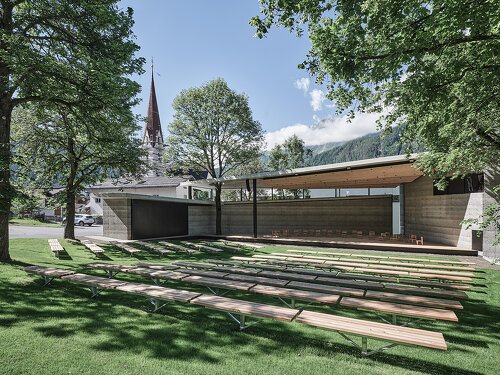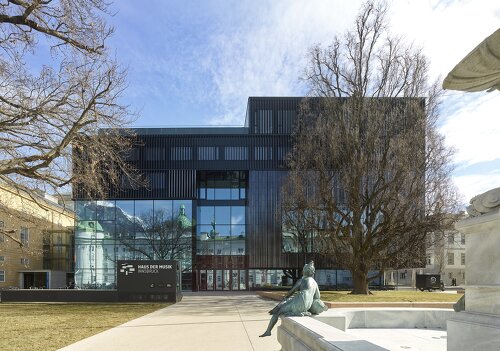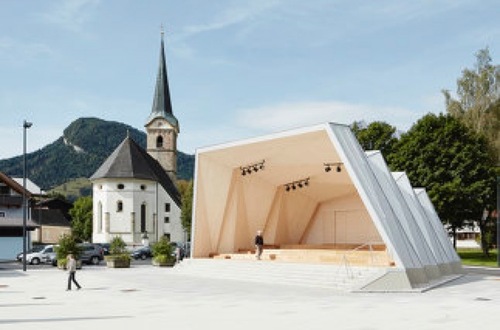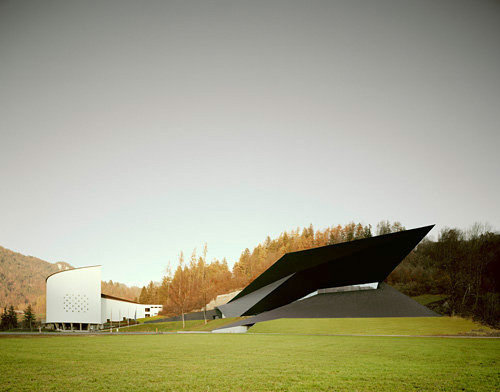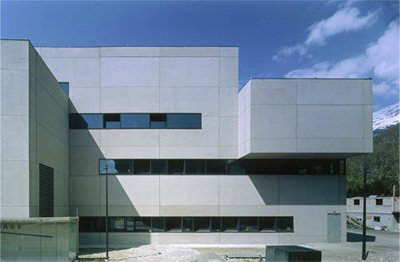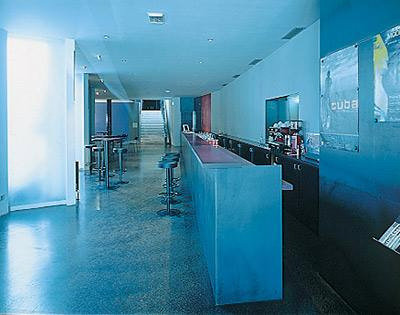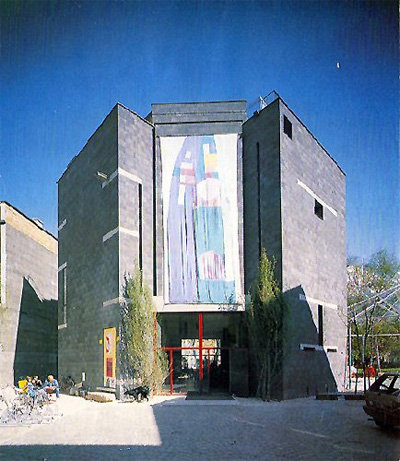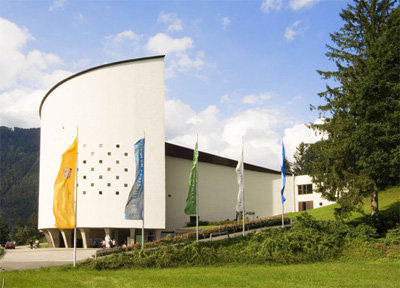Umhausen Pavilion
Architecture: Armin Neurauter (2020-2021) Builder-owner: Gemeinde Umhausen Open to the public: Yes In 2022, the music pavilion received a recognition award from the Tyrolean State Prize for New Building.
In the Tyrolean community in the lower Ötztal Valley, which is characterized by tourism and tradition, an attractive site for the village community was created with the new music pavilion. An elongated wall is flanked by two side arms for technical equipment, storage, toilets and a bar, while the slightly sloping terrain is used as a natural grandstand. The pavilion takes on its very own character through the use of tamped concrete, the exact granulation and pigmentation of which was developed in numerous experiments.


